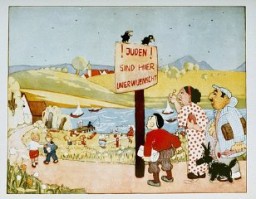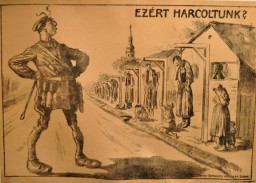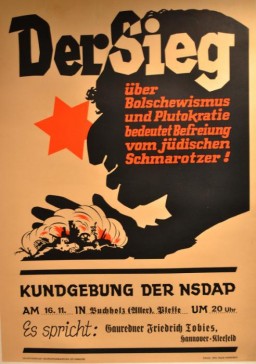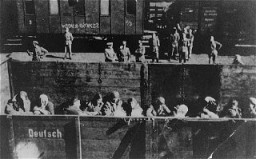Antisemitism in History: From the Early Church to 1400
Sometimes called "the longest hatred," antisemitism has persisted in many forms for over two thousand years. The racial antisemitism of the National Socialists (Nazis) took hatred of Jews to a genocidal extreme, yet the Holocaust began with words and ideas: stereotypes, sinister cartoons, and the gradual spread of hate.
In the first millennium of the Christian era, leaders in the European Christian (Catholic) hierarchy developed or solidified as doctrine ideas that: all Jews were responsible for the crucifixion of Christ; the destruction of the Temple by the Romans and the scattering of the Jewish people was punishment both for past transgressions and for continued failure to abandon their faith and accept Christianity.
In the tenth and eleventh centuries, these doctrines about Jews were hardened and unified in part because of the following: threat to the Church hierarchy from the impending split between Roman Catholicism and Greek Orthodoxy (1054); successive waves of Muslim conquest; end of millennium fervor; successes in converting the heathen ethnic groups of northern Europe; and military-spiritual zeal of the Crusades.
Seeking to retain their beliefs and culture, Jews became bearers of the only minority religion on a now Christian continent of Europe. In some countries, Jews were welcomed from time to time, but, at a time in which faith was perceived as the principal form of self-identity and intensely influenced both public and private life, Jews found themselves increasingly isolated as outsiders. Jews do not share the Christian belief that Jesus is the Son of God, and many Christians considered this refusal to accept Jesus' divinity as arrogant. For centuries the Church taught that Jews were responsible for Jesus' death, not recognizing, as most historians do today, that Jesus was executed by the Roman government because officials viewed him as a political threat to their rule. As outsiders, Jews were objects of violent stereotyping and subject to violence against their persons and property.
Among the myths about Jews that took hold in this period was the "blood libel," a myth that Jews used the blood of Christian children for ritual purposes. Other myths included the idea that Jewish failure to convert to Christianity was a sign both of service to the anti-Christ as well as of innate disloyalty to European (read Christian) civilization. Conversely, the conversion of individual Jews was perceived as insincere and as having materialistic motives.
This teaching provided the grounds upon which a superstructure of hatred could be built. Theological antisemitism reached its height in the Middle Ages. Among the most common manifestations of antisemitism throughout the ages were what we now call pogroms (riots launched against Jews by local residents, and frequently encouraged by the authorities). Pogroms were often incited by rumors of blood libel. In desperate times, Jews often became scapegoats for many natural catastrophes. For example, some clerics preached and some parishioners believed that Jews brought on the "Black Death," the plague that killed millions of people in Europe in the 14th Century, as divine retribution for their allegedly blasphemous and satanic practices.
Series: Antisemitism
Critical Thinking Questions
- What pressures and motivations might lead Church leaders and others to embrace and perpetuate antisemitic beliefs?
- Why do people generalize characteristics for an entire group? How can this be dangerous?
- How can deep-seated hatreds be countered?





